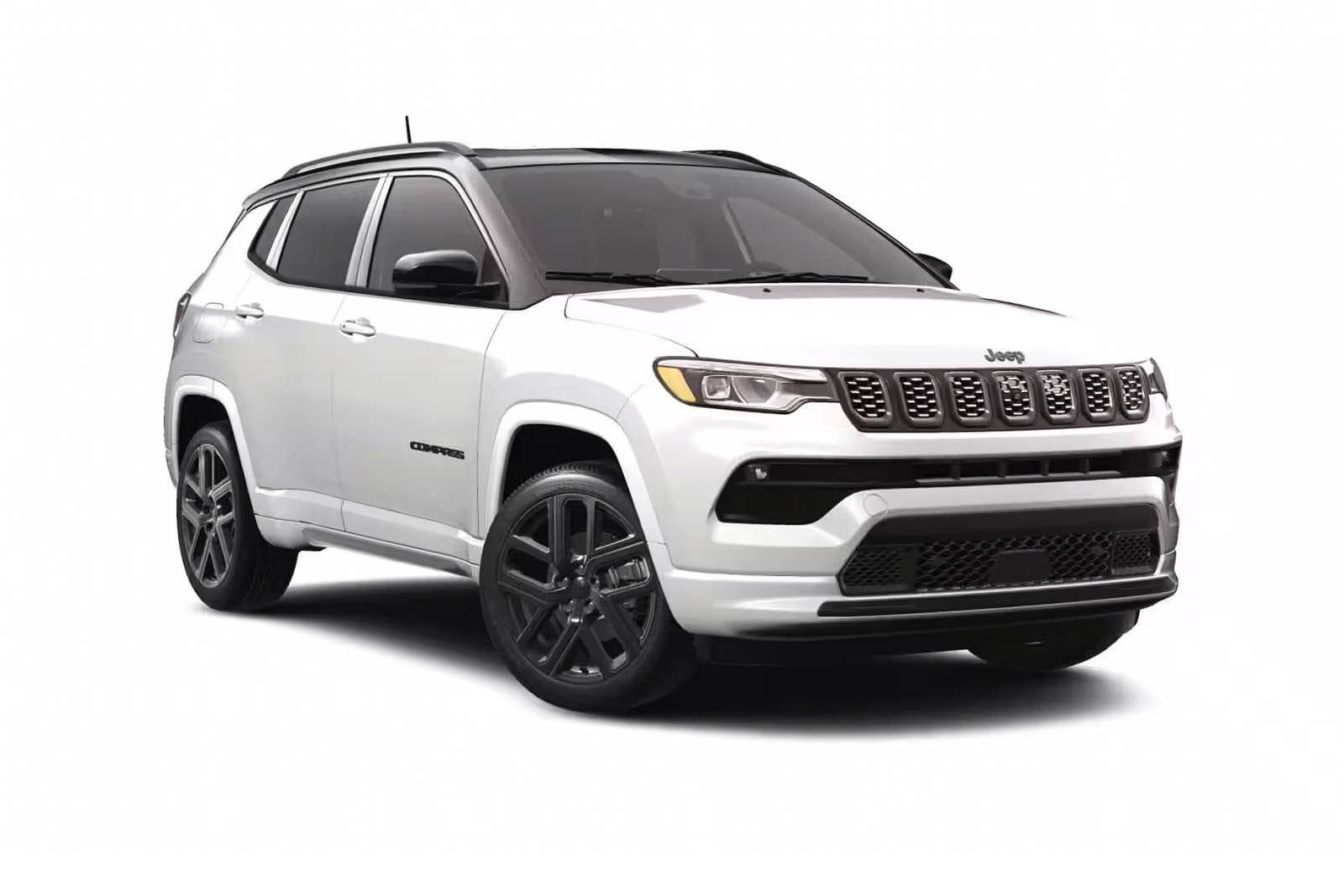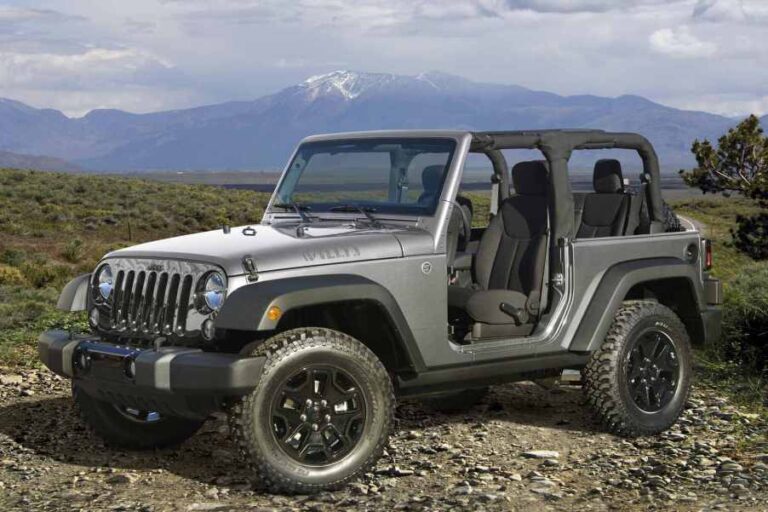How Many Miles Will Jeep Wrangler Last?
How Many Miles Will Jeep Wrangler Last? jeeps.truckstrend.com
The Jeep Wrangler is more than just a vehicle; it’s an icon, a symbol of adventure, and for many, a way of life. Known for its unparalleled off-road capability, rugged design, and open-air freedom, the Wrangler holds a special place in the hearts of automotive enthusiasts. But for prospective buyers and current owners alike, a crucial question often arises: "How many miles will a Jeep Wrangler last?" This isn’t merely about reaching a certain number on the odometer; it’s about the vehicle’s longevity, reliability, and the return on your investment. Understanding the factors that contribute to a Wrangler’s lifespan is key to maximizing its years of service and ensuring that your adventure continues for hundreds of thousands of miles.
The Baseline: What to Expect from Your Wrangler’s Lifespan
How Many Miles Will Jeep Wrangler Last?
When it comes to vehicle longevity, the Jeep Wrangler often defies conventional expectations. While the average passenger vehicle might be considered "high mileage" around 150,000 to 200,000 miles, a well-maintained Jeep Wrangler can easily surpass these figures. It’s not uncommon to see Wranglers on the road with 200,000, 250,000, or even 300,000 miles on their odometers. In fact, many enthusiasts boast about their Wranglers hitting these milestones, testament to the vehicle’s robust construction and the dedication of its owners.
However, achieving such impressive mileage isn’t a given. The potential for a Wrangler to last a very long time is inherent in its design, but its actual lifespan is heavily influenced by a multitude of factors, primarily the care it receives. Think of it less as a guaranteed number and more as a potential that needs to be nurtured through diligent maintenance and responsible ownership. A Wrangler’s life isn’t just measured in miles, but in the adventures it has completed and the memories it has helped create.
Key Factors Influencing Wrangler Longevity
The ultimate lifespan of your Jeep Wrangler is a complex equation influenced by several critical variables. Understanding these factors can empower you to make informed decisions that extend your vehicle’s life significantly.
1. Maintenance Regimen: The Cornerstone of Longevity
This is arguably the single most important factor. Adhering to or even exceeding the manufacturer’s recommended maintenance schedule is crucial. This includes:
- Regular Oil Changes: Using the correct type and viscosity of oil at recommended intervals.
- Fluid Checks and Changes: Ensuring transmission fluid, differential fluid, transfer case fluid, coolant, and brake fluid are at optimal levels and replaced when due. These fluids lubricate vital components and prevent premature wear.
- Tire Rotation and Balancing: Promotes even wear, extends tire life, and reduces strain on suspension components.
- Brake Inspections: Regular checks and timely replacement of pads and rotors prevent more costly damage to calipers and other braking system parts.
- Suspension and Steering Component Checks: Wranglers, especially those that see off-road action, put more stress on these parts. Regular inspection can catch issues before they become major problems.


Neglecting routine maintenance is the fastest way to shorten your Wrangler’s life, leading to accelerated wear, component failures, and expensive repairs.
2. Driving Habits: Gentle vs. Aggressive
How you drive your Wrangler directly impacts its longevity.
- Aggressive Driving: Frequent hard acceleration, sudden braking, and high-speed cornering put undue stress on the engine, transmission, brakes, and suspension.
- Off-Roading: While Wranglers are built for off-roading, extreme rock crawling, high-speed desert runs, or frequently pushing the vehicle to its limits can accelerate wear on the drivetrain, suspension, and frame. Responsible off-roading, with proper technique and post-trip inspections, minimizes this impact.
- City vs. Highway: Stop-and-go city driving can be harder on a vehicle than consistent highway cruising due to more frequent braking, shifting, and engine idling.

3. Environmental Factors: Climate and Terrain
The environment in which your Wrangler operates plays a significant role, particularly concerning rust.
- Salt Exposure: Vehicles in areas with heavy road salt usage during winter are highly susceptible to rust on the frame, underbody components, and body panels. This can compromise structural integrity over time.
- Humidity: High humidity can also contribute to rust formation.
- Extreme Temperatures: Both extreme heat and cold can stress fluids, rubber components, and electrical systems.
- Dust/Sand: Off-roading in dusty or sandy environments can accelerate wear on air filters, bearings, and other components if not properly cleaned and maintained.
4. Modifications and Their Quality
Many Wrangler owners modify their vehicles for enhanced performance, aesthetics, or off-road capability.
- Quality of Parts: Using cheap, poorly manufactured aftermarket parts can lead to premature failure and potentially damage other OEM components.
- Proper Installation: Incorrect installation of lifts, larger tires, or drivetrain modifications can lead to alignment issues, increased wear on steering and suspension, and even catastrophic failures.
- Drivetrain Stress: Larger tires, especially without corresponding gear ratio changes, can put immense strain on the transmission, axles, and transfer case, shortening their lifespan.
5. Year and Generation Specifics
While Wranglers are generally robust, some generations or specific engine/transmission combinations have known characteristics or common issues. For example:
- Older models (YJ, TJ) might be more susceptible to rust if not cared for.
- The 3.8L V6 engine (JK generation 2007-2011) had a reputation for oil consumption in some units, though it’s generally a durable engine.
- The 3.6L Pentastar V6 (JK 2012-2018, JL 2018+) is known for its robustness but had early issues with cylinder head ticking in some cases.
- Diesel engines (JL EcoDiesel) require specific maintenance and fluid types.
Researching common issues for your specific model year can help you be proactive in addressing potential weaknesses.
Common Wear and Tear Components (and their impact on longevity)
Even with the best care, certain components are more prone to wear, especially in a vehicle like the Wrangler that is designed for demanding use. Being aware of these can help you anticipate maintenance and budget for repairs.
- Suspension Components: Bushings, shocks, springs, control arms, and sway bar links take a beating, particularly with off-roading. Worn components affect ride quality, handling, and tire wear.
- Steering Components: Tie rods, drag links, ball joints, and steering stabilizers can develop play over time, leading to loose steering and potential safety issues.
- Drivetrain: U-joints, CV joints, differential components, and the transfer case can wear out, especially if fluids aren’t changed or if the vehicle is frequently driven hard off-road.
- Brakes: Pads and rotors are consumables, but calipers and lines can also degrade.
- Engine & Transmission: While robust, these primary components can suffer from neglect (e.g., poor fluid maintenance) or extreme stress. Sensors, gaskets, and seals can also degrade over time.
- Electrical System: Modern Wranglers have complex electrical systems. While generally reliable, sensor failures or wiring issues can occur.
- Body and Frame Rust: As mentioned, this is a major concern for older Wranglers or those in rust-prone areas. Frame rust can be a death knell for a vehicle, as it compromises structural integrity.
Maximizing Your Wrangler’s Lifespan: Practical Advice
Achieving 200,000, 300,000, or even more miles with your Jeep Wrangler is an attainable goal with the right approach. Here’s practical advice to keep your iconic vehicle running strong for decades:
- Strict Adherence to Maintenance Schedules: Don’t just follow the manufacturer’s "severe duty" schedule even if you don’t off-road aggressively. Consider it the minimum. For normal driving, consider oil changes slightly more frequently than recommended (e.g., every 5,000 miles instead of 10,000 for synthetic).
- Proactive Fluid Management: Don’t wait for problems. Regularly check and change engine oil, transmission fluid, differential fluid (front and rear), transfer case fluid, coolant, and brake fluid. These fluids are the lifeblood of your vehicle’s critical systems.
- Underbody Care: If you live in a region with road salt or frequently off-road, regularly wash the undercarriage of your Wrangler. A pressure washer can help remove salt, mud, and debris that trap moisture and accelerate rust. Consider rust-proofing treatments.
- Listen to Your Jeep: Pay attention to new noises, vibrations, smells, or dashboard warning lights. Small issues can quickly escalate into expensive repairs if ignored. Address them promptly.
- Use Quality Parts: When replacing components, opt for OEM (Original Equipment Manufacturer) parts or reputable aftermarket brands. While cheaper alternatives exist, they often don’t offer the same durability or fit, potentially leading to repeat failures.
- Gentle Driving Habits: Avoid harsh acceleration, sudden braking, and excessive speed, especially off-road. Smooth inputs are less stressful on all components. When off-roading, use proper techniques to avoid slamming into obstacles or over-stressing the drivetrain.
- Regular Professional Inspections: Even if you’re handy, a trained mechanic can spot issues you might miss during routine checks. Annual or bi-annual professional inspections can identify potential problems before they become critical failures.
- Proper Tire Care: Keep tires properly inflated, rotate them every 5,000-7,500 miles, and ensure regular wheel alignments. This not only extends tire life but also reduces strain on steering and suspension components.
Buying a Used Wrangler: What to Look For
If you’re considering a used Wrangler, careful inspection is paramount to gauging its potential longevity.
- Service Records: The most telling sign of a well-maintained vehicle. Look for consistent oil changes, fluid flushes, and records of repairs.
- Rust Inspection: Thoroughly inspect the frame (especially near body mounts), suspension components, brake lines, and exhaust for rust. Surface rust on the frame is common, but deep, flaky, or perforated rust is a major red flag.
- Fluid Leaks: Check for oil, coolant, transmission fluid, or differential fluid leaks under the vehicle and around components.
- Suspension and Steering Play: With the vehicle on a lift, check for looseness in ball joints, tie rods, control arm bushings, and wheel bearings.
- Engine Sounds: Listen for unusual knocks, ticks, or hissing sounds. Check for excessive smoke from the exhaust.
- Transmission Performance: During a test drive, ensure smooth shifts (both up and down) with no hesitation or slipping. Test 4WD engagement (2H, 4H, 4L).
- Pre-Purchase Inspection (PPI): Always get an independent mechanic, preferably one familiar with Jeeps, to perform a comprehensive PPI. This small investment can save you thousands down the line.
Jeep Wrangler Longevity Milestones & Considerations Table
| Mileage Range | Typical Condition / Expectation | Key Maintenance / Inspection Focus | Potential Cost Implication (General) |
|---|---|---|---|
| 0 – 50,000 Miles | Like new, minimal wear; break-in period. | Regular oil changes, tire rotations, fluid checks, initial inspections. | Low |
| 50,000 – 100,000 Miles | Still strong; initial wear on consumables; minor component replacement possible. | Brake service, spark plugs, belt inspection, differential/transfer case fluid change. | Low to Medium |
| 100,000 – 150,000 Miles | Mid-life; potential for more significant wear on suspension/steering. | Suspension bushings, ball joints, U-joints, potentially shocks. Deeper fluid flushes. | Medium |
| 150,000 – 200,000 Miles | High mileage, but capable; major component replacement more likely. | Alternator, water pump, radiator hoses, transmission service (if not done). | Medium to High |
| 200,000 – 250,000 Miles | Very high mileage; continued vigilance on all systems; rust inspection. | Engine/transmission mounts, more frequent inspection of all major systems. | High (ongoing) |
| 250,000+ Miles | Exceptional longevity; often requires significant part replacements. | Ongoing proactive maintenance, rust mitigation, potential engine/transmission rebuild. | Very High (on demand) |
Note: Costs are general and highly dependent on part quality, labor rates, and severity of wear/damage.
Frequently Asked Questions (FAQ)
Q1: Is 200,000 miles a lot for a Jeep Wrangler?
A1: While 200,000 miles is considered high mileage for many vehicles, it’s a testament to a Wrangler’s durability and good maintenance if it reaches this milestone. Many Wranglers can and do go well beyond 200,000 miles with proper care, so it’s less about the number and more about the vehicle’s overall condition and service history.
Q2: Which Wrangler engine lasts the longest?
A2: Generally, the 4.0L inline-six engine found in the TJ and older YJ Wranglers is legendary for its longevity and simplicity, often reaching 300,000+ miles. The newer 3.6L Pentastar V6, introduced in the JK and continued in the JL, has also proven to be a very robust and reliable engine, with many owners reporting high mileage without significant issues when properly maintained.
Q3: Does off-roading reduce a Wrangler’s lifespan?
A3: Off-roading can certainly accelerate wear and tear on certain components, particularly the suspension, steering, drivetrain, and frame. However, if done responsibly (avoiding extreme abuse) and followed by thorough post-trip inspections and maintenance (like washing the undercarriage and checking for damage), a Wrangler can still achieve high mileage even with regular off-road use. Neglect after off-roading is the real culprit.
Q4: What’s the most common reason Wranglers fail prematurely?
A4: The most common reasons for a Wrangler failing prematurely are typically:
- Lack of Maintenance: Neglecting fluid changes, ignoring warning lights, and skipping routine inspections.
- Severe Rust: Especially in areas with road salt, rust can compromise the frame and critical components beyond economical repair.
- Abuse/Neglect: Pushing the vehicle beyond its limits repeatedly without proper care, or ignoring minor issues until they become major, costly failures.
Q5: Is it expensive to maintain a high-mileage Wrangler?
A5: Maintaining a high-mileage Wrangler can be more expensive than a lower-mileage one because more components will naturally wear out and require replacement. However, this is often offset by the absence of car payments. Proactive maintenance can help spread out these costs, and the availability of aftermarket parts can sometimes make repairs more affordable than for other vehicles. It’s an investment in continued adventure.
Conclusion
The question of "How many miles will a Jeep Wrangler last?" doesn’t have a single, definitive answer. While these rugged machines are built with inherent durability, their ultimate lifespan rests significantly in the hands of their owners. With diligent maintenance, responsible driving habits, and prompt attention to any issues, a Jeep Wrangler can easily surpass 200,000, 250,000, or even 300,000 miles, providing years of reliable service and countless adventures. It’s not just about the mileage on the odometer; it’s about the quality of those miles and the memories forged along the way. Your Wrangler’s longevity is a direct reflection of the care and commitment you invest in it, making it a true testament to the enduring spirit of the open road and the trails less traveled.






